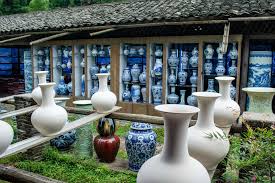Jingdezhen, a small city in China’s Jiangxi Province long known as the “porcelain capital,” is experiencing a remarkable revival driven not by factories or industry, but by art, youth, and culture.
A surprising symbol of this renaissance is the “Ducktor Sui,” or “Sui Sui Duck,” a quirky porcelain incense burner from the Ming Dynasty (1368–1644). Originally intended for the imperial palace but never delivered, the duck-shaped relic lay buried for centuries before being unearthed in the 1980s. Today, its playful charm has captured the imagination of a new generation, becoming a cultural icon and generating millions in creative IP revenue. Even global TikTok star Khaby Lame recently posed with the famous ducks during his visit.
Beyond its viral fame, Jingdezhen’s transformation tells a deeper story. Once a struggling industrial city after its state-run porcelain factories closed in the 1990s, it has reinvented itself through urban renewal that values heritage over high-rises. The city preserved its historic kiln sites and factory buildings, converting them into thriving artist spaces.
At the heart of this rebirth is Taoxichuan, a creative neighborhood built from old porcelain factory grounds. Offering affordable studios and apartments, it has attracted tens of thousands of “Jingpiaos” young artists who come to live, learn, and create. The area now draws millions of tourists annually, eager to experience the blend of old kilns, galleries, and street fairs.
Today, Jingdezhen’s ceramics industry still thrives, with over 60,000 small workshops and exports to 80+ countries. But what truly sets the city apart is its spirit a place where centuries-old craftsmanship meets modern imagination.
Jingdezhen has proven that preserving tradition can be the foundation for innovation and that culture, not just commerce, can breathe new life into a city.

